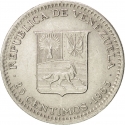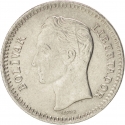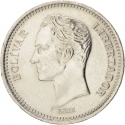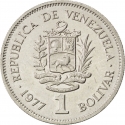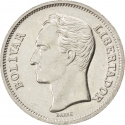You are about to finish your registration. Please check your mailbox (including spam folder). There should be a letter with a confirmation link. Check setting to make sure that your e-mail address is correct.
Send letter again
Obverse

|
Portrait of Simón Bolívar to the right. Date below. REPUBLICA DE COLOMBIA |
|---|---|
Reverse

|
Value inscription, Colombia coat of arms, 16 stars. VEINTE CENTAVOS |
| Edge |
20 Centavos
KM# 215
Characteristics
| Material | Cupronickel |
| Weight | 5.1 g |
| Diameter | 23.4 mm |
| Thickness | 1.44 mm |
| Shape |
|
| Alignment | Coin |
| Alt # |
|


